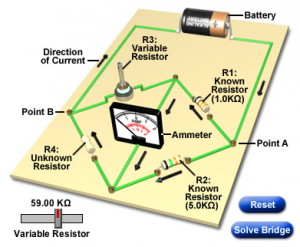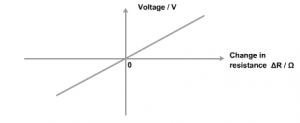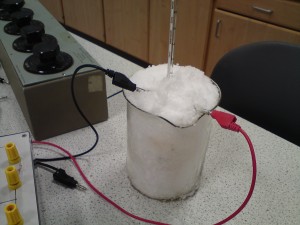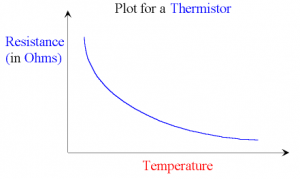 mrmackenzie
mrmackenzie
S4: work done, potential and kinetic energy
We finished the transport section with a look at Work, Potential & Kinetic energy. Those of you aiming for Credit need to carry out calculations involving kinetic energy using
Here is a video about work, potential energy & kinetic energy from Bozeman Science
Most of the calculations will be based on the principle of conservation of energy. Dr. Altman has an excellent series of videos examining conservation of energy examples from Roadrunner cartoons.
I have attached a pdf handout with worked examples on potential energy, work and kinetic energy. If you want some more revision materials, try here.
balanced and unbalanced forces
Here are some videos on balanced and unbalanced forces affecting the motion of objects. The first clip examines the forces on a cyclist as she cycles round a velodrome.
The second clip looks at the way skydivers use forces to land safely.
I’ve also attached a pdf with some notes on forces, free body diagrams and Newton’s laws of motion. Download the file using the link below.
S4 forces and seatbelts
We’ve been learning about forces in class and today we looked at how car seatbelts use forces to keep us safe. Mr Mallon’s HelpMyPhysics site has a short video that demonstrates how a monkey can stay safe during a trolley collision when it is given a seatbelt.
Here is a seatbelt advert from Sussex, the family’s arms show what a seatbelt does.
The next youtube seatbelt advert is pretty graphic – it’s designed to show what happens to our insides when we travel without a seatbelt. Here is a link to the video, please don’t click if you’re squeamish.
There are several pages of notes about forces on BBC Bitesize. Remember to try their test when you have worked through the topic.
I have attached a pdf from RoSPA that provides a history of the car seatbelt. Ignore the bad man who was the face of seatbelt campaigning in the 1970s…
AH magnetism revision
We’ve covered all of the magnetism work that you will need for the prelim at the end of the month. You don’t need to know about inductors for this paper.
Here are some resources to get your revision underway.
We use permanent magnets and electromagnets in class, but to create a really strong magnetic field requires a superconducting magnet like the one in this video.
Disclaimer: I used to work for the company that built that magnet.
I’ve attached a pdf with magnetism notes and questions for you to get some practise at the calculations and proofs you should know.
Capacitor revision
We’ve just completed the topic on capacitors in dc circuits, finishing off with a detailed study of the graphs obtained for current & voltage against time when a capacitor is charged or discharged through a series resistor. There are some additional notes and practice questions at the end of this post but please watch the clips first.
This introduction to capacitors from the nice people at Make Magazine is a good starting point.
The S-cool revision site has some helpful notes and illustrations on capacitor behaviour; try page 1 (how capacitors work) and page 2 (charging and discharging).
There is information on charging and discharging capacitors on BBC Bitesize.
Here is a video that covers some of the areas we discussed in class. Ignore the maths at the end of each section of the film, you won’t need it. Notice how the man in the film uses a lightbulb, rather than an ammeter, to show when the current is large or small. Clever, eh?
You must be explain how a flashing neon bulb can be controlled using a capacitor & resistor arranged in series. We shall cover this in class but here is a short video introduction.
Blinking Neon Bulb (5F30.60A) from Ricardo Alarcon on Vimeo.
A few lessons back, I compared energy storage using normal electrolytic capacitors to a 10F supercapacitor, and we observed its superior performance in terms of energy storage. This video goes one step further and shows the fun you could have with an ultracapacitor. Do not try this at home!
Of course, you can always make your own capacitor with paper and electrically conductive paint.
We also looked at capacitors in ac circuits. You need to know that a capacitor will allow an ac current to flow. The current in such a circuit will increase as the current increases. Mr Mallon’s site has a revision activity about capacitors in ac circuits.
Now download the pdf below. It contains notes to help with your prelim revision and some extra capacitor problems.
Thanks to Fife Science for the original pdf from Martin Cunningham.
review of Wheatstone Bridge circuits
With your prelim scheduled for the end of this month, I thought you might find a repost of this review of the Wheatstone Bridge useful for revision. There are practise questions in the attached pdf document.
We’ve just completed the section of Higher unit 2 that investigates the behaviour of a Wheatstone Bridge. The bridge circuit is really just a pair of voltage dividers connected in parallel. A voltmeter, ammeter or galvanometer (very sensitive ammeter) connects the two voltage divider chains together, as shown below.
When the voltage (or current) displayed on the meter is zero, we say that the Wheatstone bridge is balanced. For a balanced bridge, it is possible to show that
[you have this proof in your notes folder]
For the circuit shown above, the voltmeter will display the difference in electrical potential between points B and D. We can calculate this potential difference by finding the voltages at points B and D using the voltage divider equation you used for Standard Grade/Intermediate 2 Physics.
So in this example,
and
The voltmeter displays the potential difference between these two points, i.e.
Here is a short video that provides a recap of the Wheatstone Bridge.
and a worked example from an old SQA past paper
Now click on the picture below to try an interactive Wheatstone Bridge problem (you will need to have Java installed).
Instructions:
- Press the Reset button to change the value of all the resistors in the circuit.
- Use the slider to balance the bridge. The circuit uses a centre-zero meter, so aim to get the indicator dead centre.
- Find the unknown resistance (R4) using the value of the other 3 resistors when the circuit is balanced.
You can repeat this simulation as many times as you like by pressing Reset to change the resistor values…..it’s great practice!
Here is an example of an application of the Wheatstone Bridge, called the metre bridge.
When a Wheatstone Bridge is slightly out of balance, it will provide a linear response. In other words, small changes in resistance will produce proportionally small changes in voltage or current. When these small changes are plotted, we obtain a straight line through the origin, like this:
We tried to use this property of a Wheatstone Bridge to find the temperature of the physics classroom. We used some of the snow outside for a low temperature and boiling water for a high temperature.
As we discussed today, this was not a particularly successful experiment due to the non-linear response of the thermistor to changes in temperature – you might remember this from Standard Grade or Int 2 Physics.
For temperature ranges much smaller than the 100°C we attempted, it is possible to obtain an accurate estimate of room temperature.
Click on the download link below to try some Wheatstone Bridge questions.
S3 homework solutions
Here are the solutions to the HW exercise I set before Christmas. I am pleased to see so many of you showing full working.
Please download the pdf and go through anything you didn’t get right. Based on what I saw in your jotters, some answers have more detail than others.
3.3 resistance homework
Your homework exercise on resistance is attached as a pdf document. Download the file and answer the questions in your homework jotter. Hand in your jotter no later than Monday 17/12/12.






